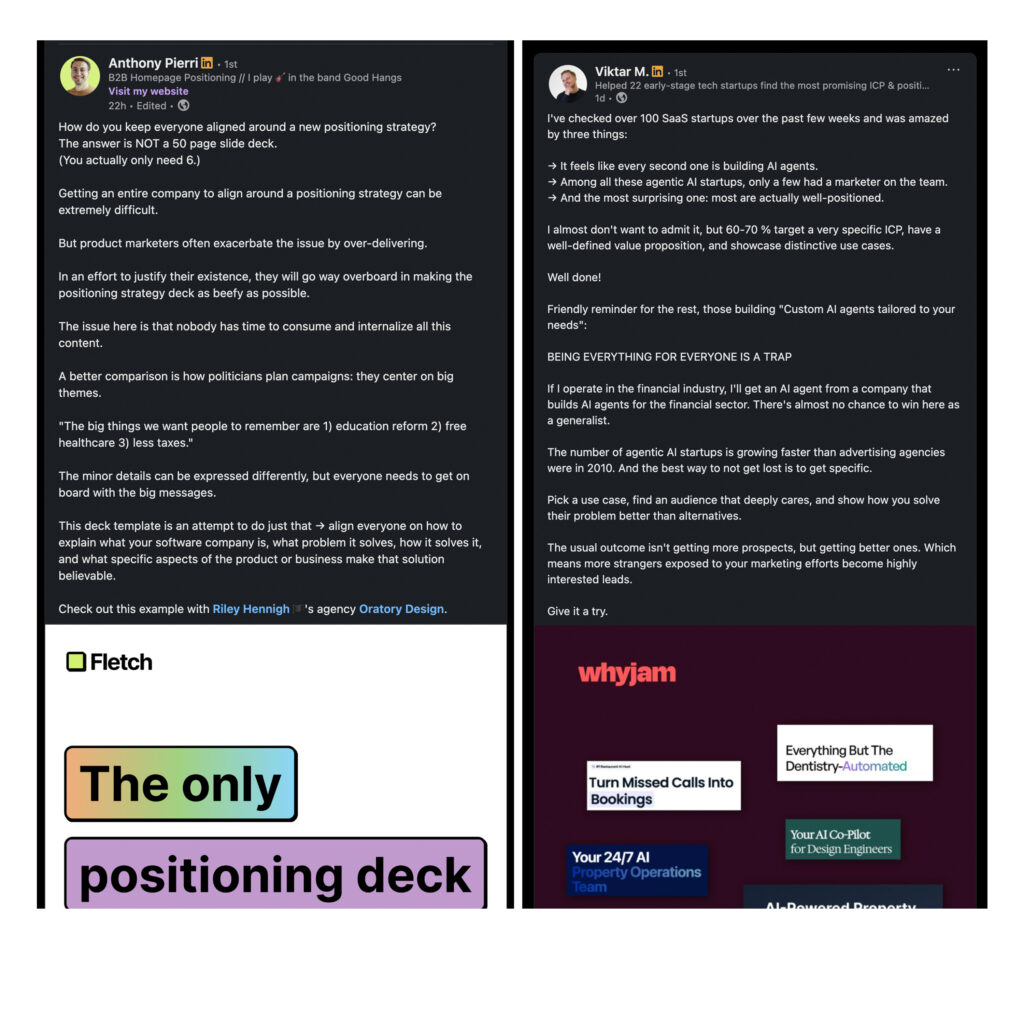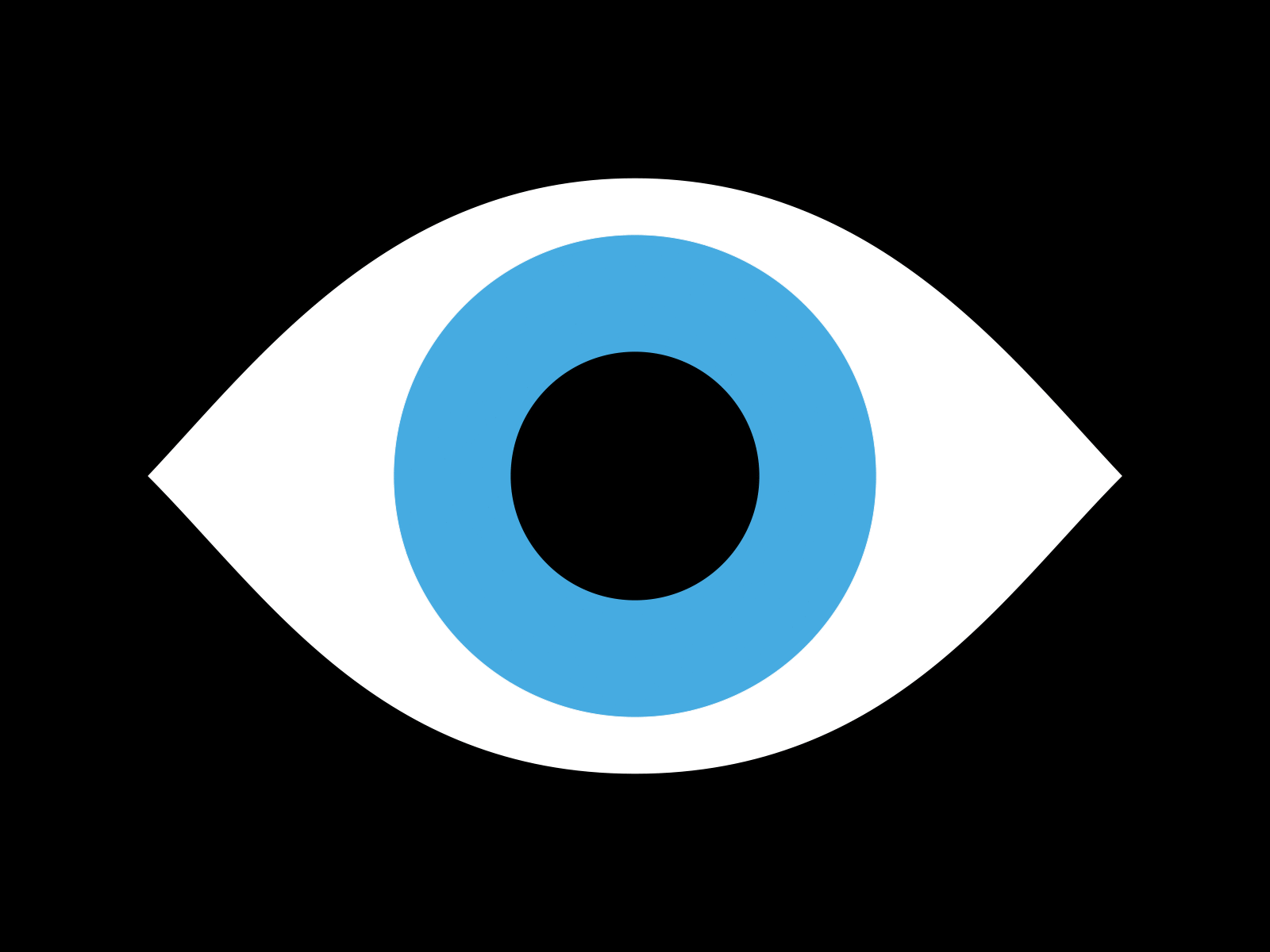Before diving in, I respect both Anthony and Viktar. They’re helping companies clarify their messaging, and that matters. However, a fundamental confusion is occurring that needs to be addressed. This isn’t about calling anyone out. It’s about clarifying what positioning actually means versus what most people think it means. Also, the Emperor’s image source.
Let’s dive in.
I need to address something that continues to damage B2B SaaS: the misuse of “positioning.” Two recent posts reveal how this confusion creates the undifferentiated mess we’re drowning in.
Anthony’s post describes a 6-slide deck for “positioning strategy” alignment.
Viktar’s post celebrates 100+ AI agent startups as “well-positioned” because they have specific ICPs, clear value propositions, and distinctive use cases.

The problem: Anthony’s playbook creates what Viktar is celebrating — and neither is positioning.
What Anthony actually describes:
A solid framework for messaging alignment. His 6-slide deck helps teams articulate functional descriptions, problem statements, value propositions, and supporting features. This works well for internal consistency.
But it’s framing, not positioning.
What Viktar actually celebrates:
Startups with specific ICPs, well-defined value props, and distinctive use cases. He calls this “well-positioned” and says “well done!”
This is also framing, not positioning.
The evidence that this approach fails:
Look at the whyjam image Viktar shared. Multiple well-framed value propositions:
- “Turn Missed Calls Into Bookings”
- “Everything But The Dentistry—Automated”
- “Your AI Co-Pilot for Design Engineers”
- “AI-Powered Property Inspections”
- “Your Best Tire Salesperson On Every Call”
Each one has a clear ICP, value proposition, and use case. Each one is “well-positioned” by Viktar’s definition. Each one followed Anthony’s playbook perfectly.
But what concept does whyjam own in customers’ minds?
Nothing.
They’re well-framed for multiple use cases. They own zero mental territory.
This is the vicious cycle destroying B2B SaaS:
- Anthony teaches framing as a “positioning”
- Companies execute it well with clear ICPs and value props
- Viktar celebrates this as “well-positioned”
- Market floods with “well-positioned” companies
- Nobody owns any mental territory
- Everyone competes on features and use cases
- Category becomes undifferentiated
- Everyone wonders why differentiation is so hard
What positioning actually is:
Positioning isn’t how you describe yourself. It’s the concept you own in customers’ minds.
- Volvo doesn’t just have clear messaging about safety features. Volvo owns safety itself. The noun, the concept. When competitors talk about safety, they’re in Volvo’s shadow.
- Salesforce didn’t just target sales teams with a value prop. They owned CRM as a category, using ‘no software’ as the battering ram to break down the old guard, then occupying the mental territory that opened up.
- Tesla doesn’t position itself as “a better electric car.” Tesla owns the “future,” a mental category they created and dominate.
- Red Bull doesn’t have use cases around energy. Red Bull owns human performance as a concept, which is why they can charge premium prices for caffeinated sugar water.
The critical distinction:
Framing = How you communicate your offering (tactical)
- Who you serve (ICP)
- What problem do you solve (value prop)
- How you’re different (use cases/features)
Positioning = What concept you own in the customer’s mind (strategic)
- What mental territory belongs to you
- What noun do you own, not what adjectives you claim
- What makes customers think of you first when they need X
Anthony’s deck answers: “How do we talk about ourselves consistently?”
Viktar’s criteria answer: “Who do we serve and what do we offer them?”
Positioning answers: “What mental territory do we own that nobody else can claim?”
The tests for real positioning:
Test 1: The Automatic Association
When the concept you claim to own comes up in conversation, do customers automatically think of you first, without prompting, without consideration, without alternatives?
Not “one of the options.” The only answer.
This isn’t about saying your name. It’s about owning the mental space. When someone says “let’s search for that,” they don’t think “let’s use a search engine,” they think Google. The concept and the company collapsed into one.
Test 2: The Gravity Test
Does your position determine your:
- Product roadmap (what you build next)
- Hiring decisions (who fits)
- Capital allocation (where money goes)
- Partnership strategy (who you align with)
- What opportunities you reject
If your position is real, everything orbits around it. Change the position, and you’d have to rebuild the company. If you can change your messaging without changing anything else? That was framing, not positioning.
Test 3: The Competitor Copy Test
Can competitors copy your words without owning what you own?
Microsoft has spent decades trying to copy Apple. They’ve copied the minimalist design language, the retail stores, the product aesthetics, and even the ad style. They have unlimited resources and talent.
However, Apple still owns the concept of creativity. Microsoft can’t take it, no matter how much they copy, because the mental territory was claimed through decades of decisions, culture, and proof. NOT through messaging that can be replicated. If competitors can steal your thunder by copying your messaging, you never truly had a position. You had good copy.
Test 4: The Shorthand Test
What shorthand do customers use when they think of you?
They won’t always say the exact concept. They’ll use mental shortcuts:
- “The Tesla way” (meaning: the future)
- “Pull a Netflix” (meaning: category disruption)
- “Salesforce it” (meaning: cloudify it)
When your company becomes the verb, the metaphor, the reference point, that’s owned mental territory.
What this reveals about Anthony’s deck and Viktar’s celebration:
All those “well-positioned” companies with clear ICPs and value props?
Try the tests:
- Do customers automatically think of whyjam for any specific concept?
- Does their position determine everything they build, or just how they talk about it?
- Could competitors copy their messaging and take their position?
- What shorthand do customers use for them?
You’ll find messaging alignment, not positioning. Clear communication, not mental ownership.
That’s the difference.
Why this matters:
Viktar warns that “being everything for everyone is a trap.” He’s right. But what he’s celebrating IS the trap, just executed at a micro level across multiple use cases.
When everyone follows Anthony’s framing playbook, you get what we see now:
- 100+ AI agent companies with specific ICPs
- Clear value propositions
- Distinctive use cases
- Zero mental territory ownership
Each one can explain what they do. None of them owns a concept.
The cost:
Good framing without positioning creates:
- Companies with aligned messaging but no defensible mental territory
- Categories crowded with indistinguishable “solutions”
- Marketing teams optimizing communication while competitors own the concepts
- Leadership making tactical decisions without strategic anchors
- Businesses competing on features and price instead of mental ownership
You can have perfect messaging alignment and still own nothing in customers’ minds.
What to do instead:
Use Anthony’s deck for what it is: a framing tool for internal alignment on how you communicate.
But don’t confuse that with positioning.
Before you align on how to talk about yourself, answer:
- What concept will we own in customers’ minds?
- What noun belongs to us, not what adjectives describe us?
- What mental territory can we claim and defend?
- What makes us the automatic answer when customers need X?
Positioning is a leadership decision about what you stand for.
Framing is how you communicate that decision.
If we continue to teach framing as positioning, we’ll continue to build markets full of companies that can explain themselves clearly while owning nothing in customers’ minds.
That’s not differentiation.
That’s organized commoditization.
The best messaging deck in the world can’t save you if you don’t own a concept worth talking about.
Uncover your position

Before you hire a messaging consultant to wordsmith your homepage, or an agency to “refresh your brand,” or someone to fix what they’ll call positioning (but is really just tactical framing), try this first.
The CEO Clarity Starter Kit
It does exactly what we just read. It helps you find and own your noun.
What you do:
- Run the Position Audit (reveals what noun you might already own without knowing it)
- Complete the 8-Question Advisor (the same questions that would surface “Command” for Cluely)
- Feed the output into ClarityGPT (included)
What you get:
- Your noun. The concept you can actually own, not just claim
- A 4-Level Positioning Canvas showing how to move from saying it to OWNING it
- ClarityGPT translates your position into landing pages, offers, and LinkedIn profiles (written in your buyer’s voice, not consultant-speak)
- A 30-day positioning course so you can apply this method without me
Time required: About an hour (less time than reading three more case studies about tactics that won’t work without position)
Who’s used it: 200+ CEOs and founders who were tired of pushing uphill
Investment: $249 USD
Most realize they don’t need the consultant or agency after this. Or they need far less than they thought. Because once you know your noun (your position), the tactics become obvious. The distribution chooses itself. The customers explain you better than you explain yourself.
And yes, if you buy the kit, it nudges me closer to that Porsche in the photo. Thanks in advance for supporting excellent positioning and questionable life choices.

Stop competing on features. Start owning concepts.



Leave a Reply
You must be logged in to post a comment.